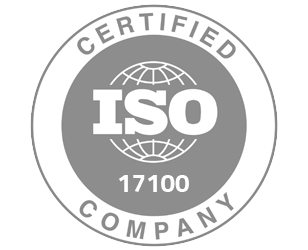
The History of Arabic Language: Origins and Evolution
Are you curious about how a complex language like Arabic developed? Originating in the Arabian Peninsula, Arabic has evolved over centuries, transforming from ancient inscriptions into a diverse language with many modern dialects. In this blog post, we’ll take you through the history of the Arabic language, exploring its origins, evolution, and the cultural influences that shaped it into the language it is today.
The Origins of the Arabic Language
The origins of the Arabic language trace back to the 4th century CE, with early evidence found in inscriptions from the Arabian Peninsula. These inscriptions, known as Old Arabic, are the earliest written records of the language and reflect its roots within the Semitic language family. Old Arabic was spoken by various tribes in the region, and through their interactions, trade, and cultural exchanges with neighboring civilizations, the language gradually evolved.
The Development of the Arabic Alphabet
The history of the Arabic alphabet begins with the Nabataean script, which was used by the Nabataeans, an ancient people who lived in the Arabian Peninsula and surrounding areas. The Nabataean script was based on the Aramaic alphabet, a writing system used in the ancient Near East. Over time, the Arabic language adapted the Nabataean script, modifying it to better suit its sounds and forming the distinct writing system we recognize today.
From Old Arabic to the Qur'anic
The 7th century CE marked a crucial turning point in the history of the Arabic language with the rise of Islam. When the Qur'an was revealed in Arabic to the Prophet Muhammad, it played a major role in shaping and standardizing the language. As the Qur'an became the central religious text for Muslims, Arabic was spread widely, not just across the Arabian Peninsula, but to other regions as well. This helped establish Arabic as the language of religion, law, and education within the expanding Islamic world, giving it greater influence and importance.
Classical Arabic
From the 8th to the 9th century, Arabic developed into Classical Arabic, which was used in literature, science, and philosophy during the Islamic Golden Age. Scholars across the Muslim world wrote important works in Arabic, establishing it as the language of intellectual and cultural exchange. Over time, as Arabic spread to different regions, it evolved into various dialects influenced by local languages, including North African, Levantine, Gulf, and other regional variations.
Modern Standard Arabic
In the 19th and 20th centuries, Modern Standard Arabic (MSA) became the formal version of the language, based on Classical Arabic. It is used in education, media, literature, and government across many Arabic-speaking countries, including Egypt, Saudi Arabia, Morocco, Lebanon, Syria, and others in the Middle East and North Africa. Even though MSA is the standard for formal communication, people still speak different regional dialects in everyday life, such as Egyptian, Levantine, Gulf, and Maghrebi Arabic. Today, Arabic remains a language with both ancient roots and modern variations.
The Current State of the Arabic Language
Arabic is an official language in 22 countries, forming the Arab League, and it is one of the six official languages of the United Nations. The language plays a vital role in several industries, particularly in the energy sector, with countries like Saudi Arabia and the UAE leading global oil production. It is also crucial in trade, education, and media across the Arab world, with outlets such as Al Jazeera holding significant influence in the Middle East and North Africa (MENA) region. Arabic is also integral to religious practices, as it is the language of the Qur'an and remains the liturgical language for millions of Muslims worldwide.
In addition, the rise of digital platforms has contributed to the growth of "digital Arabic," a blend of local dialects, slang, and borrowed terms, especially among younger speakers. For instance, users may write "أنا في الطريق, brb!" (I'm on my way, brb!), blending Arabic with English acronyms. Another example is "Arabizi," where numbers replace Arabic letters (e.g., “3” for “ع”), commonly used in texting. As Arabic adapts to the digital age, it continues to evolve, maintaining its cultural importance while integrating into modern communication systems.
In conclusion, the Arabic language has a long and fascinating history, evolving from its ancient roots to become an important language today. From the development of its alphabet to its role in religion and culture, Arabic has shaped the world in many ways. Today, it is a key language in industries like energy and media and is spoken by millions of people across the globe. As technology advances, Arabic continues to change and adapt, while still preserving its deep cultural and historical significance.







